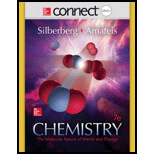
Concept explainers
(a)
Interpretation:
Nuclear reaction for formation of
Concept Introduction:
Balancing nuclear reaction equation: The balanced nuclear reaction should conserve both mass number and atomic number.
- The sum of the mass numbers of the reactants should be equal to the sum of mass numbers of the products in the reaction.
- The sum of
atomic numbers (or the atomic charge) of the reactants should be equal to the sum of atomic numbers (or the atomic charge) of the products in the reaction.
(b)
Interpretation:
Nuclear reaction for formation of Francium-221 by
Concept Introduction:
Balancing nuclear reaction equation: The balanced nuclear reaction should conserve both mass number and atomic number.
- The sum of the mass numbers of the reactants should be equal to the sum of mass numbers of the products in the reaction.
- The sum of atomic numbers (or the atomic charge) of the reactants should be equal to the sum of atomic numbers (or the atomic charge) of the products in the reaction.
(c)
Interpretation:
Nuclear reaction for formation of Iodine-129 by
Concept Introduction:
Balancing nuclear reaction equation: The balanced nuclear reaction should conserve both mass number and atomic number.
- The sum of the mass numbers of the reactants should be equal to the sum of mass numbers of the products in the reaction.
- The sum of atomic numbers (or the atomic charge) of the reactants should be equal to the sum of atomic numbers (or the atomic charge) of the products in the reaction.
Want to see the full answer?
Check out a sample textbook solution
Chapter 24 Solutions
Connect 2-Year Access Card for Chemistry: The Molecular Nature of Matter and Change
- help 20arrow_forwardProvide the drawing of the unknown structure that corresponds with this data.arrow_forward20.44 The Diels-Alder reaction is not limited to making six-membered rings with only car- bon atoms. Predict the products of the following reactions that produce rings with atoms other than carbon in them. OCCH OCCH H (b) CH C(CH₂)s COOCH མ་ནས་བ (c) N=C H -0.X- (e) H C=N COOCHS + CH2=CHCH₂ →→arrow_forward
- 3) Draw a detailed mechanism and predict the product of the reaction shown? 1) EtMgBr 2) H3O+arrow_forwardHow to draw the mechanism for this reaction?arrow_forward> H₂C=C-CH2-CH3 B. H₂O Pt C. + H2 + H₂O H D. 16. Give the IUPAC name for each of the following: B. Cl Cl c. Cl Cl 17. Draw the line-angle formula for each of the following compounds: 1. phenol 2. 1,3-dichlorobenzene 3. 4-ethyltoluene < Previous Submit Assignment Next ▸arrow_forward
 ChemistryChemistryISBN:9781305957404Author:Steven S. Zumdahl, Susan A. Zumdahl, Donald J. DeCostePublisher:Cengage Learning
ChemistryChemistryISBN:9781305957404Author:Steven S. Zumdahl, Susan A. Zumdahl, Donald J. DeCostePublisher:Cengage Learning ChemistryChemistryISBN:9781259911156Author:Raymond Chang Dr., Jason Overby ProfessorPublisher:McGraw-Hill Education
ChemistryChemistryISBN:9781259911156Author:Raymond Chang Dr., Jason Overby ProfessorPublisher:McGraw-Hill Education Principles of Instrumental AnalysisChemistryISBN:9781305577213Author:Douglas A. Skoog, F. James Holler, Stanley R. CrouchPublisher:Cengage Learning
Principles of Instrumental AnalysisChemistryISBN:9781305577213Author:Douglas A. Skoog, F. James Holler, Stanley R. CrouchPublisher:Cengage Learning Organic ChemistryChemistryISBN:9780078021558Author:Janice Gorzynski Smith Dr.Publisher:McGraw-Hill Education
Organic ChemistryChemistryISBN:9780078021558Author:Janice Gorzynski Smith Dr.Publisher:McGraw-Hill Education Chemistry: Principles and ReactionsChemistryISBN:9781305079373Author:William L. Masterton, Cecile N. HurleyPublisher:Cengage Learning
Chemistry: Principles and ReactionsChemistryISBN:9781305079373Author:William L. Masterton, Cecile N. HurleyPublisher:Cengage Learning Elementary Principles of Chemical Processes, Bind...ChemistryISBN:9781118431221Author:Richard M. Felder, Ronald W. Rousseau, Lisa G. BullardPublisher:WILEY
Elementary Principles of Chemical Processes, Bind...ChemistryISBN:9781118431221Author:Richard M. Felder, Ronald W. Rousseau, Lisa G. BullardPublisher:WILEY





